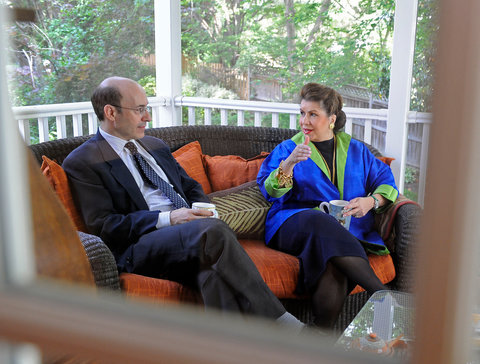Ben S. Bernanke is, of course, the chairman of the Federal Reserve, but he always seems most comfortable as an educator, a role he slips into for a commencement address on Saturday at Bard College at Simon’s Rock.
If you’re looking for news about monetary policy, read no further. Mr. Bernanke’s speech mentions not a word about his day job. (In 2009, he opened a commencement address by saying, “The business reporters should go get coffee or something, because I am not going to say anything about the markets or monetary policy.” This time, we had to read the whole thing to make sure that no hint of news was buried inside.)
No doubt the graduating class will be much relieved to have avoided a modern version of Paul Volcker’s commencement address at American University in 1984, dug up by Catherine Hollander of National Journal. One can only imagine the faces in that audience as Mr. Volcker announced, “I’d like to take advantage of your captive presence today, before you scatter into the real world, to reflect a bit on that uniqueness, on the justification for our special role and degree of independence within the government, and on the special responsibilities that independence implies.”
What Mr. Bernanke’s speech delivers, instead, is a brief and engaging sketch of the debate about the state of innovation.
Economic growth depends on innovation, and some see evidence we’re having less of it — or at least that the areas of ongoing innovation, like information technology, are making less difference in our lives. The economist Robert Gordon wrote last year that we’re no longer inventing anything as useful as indoor flushable toilets. The economist Tyler Cowen offered a fluid account of the same basic argument in a brief, important book with a long title: “The Great Stagnation: How America Ate All the Low-Hanging Fruit of Modern History, Got Sick and Will (Eventually) Feel Better.”
Mr. Bernanke, describing this argument, compares the present moment with life in 1963, when he was 9 years old. “Though my memory may be selective, it doesn’t seem to me that the differences in daily life between then and now are all that large,” he says in the prepared text of the speech. “Heating, air conditioning, cooking, and sanitation in my childhood were not all that different from today. We had a dishwasher, a washing machine and a dryer. My family owned a comfortable car with air-conditioning and a radio, and the experience of commercial flight was much like today but without the long security lines. For entertainment, we did not have the Internet or video games, as I mentioned, but we had plenty of books, radio, musical recordings, and a color TV (although, I must acknowledge, the colors were garish and there were many fewer channels to choose from).”
But the real concern is about the future: What if life continues to resemble 1963? What if the Internet doesn’t change the world?
And on this count, Mr. Bernanke breaks with the bleak traditions of his dismal profession to declare himself a fundamental optimist.
He notes that pessimism also ran rampant in the 1930s; it is human nature to assume (and to predict) that current trends will persist. “It is common to hear people say that the epoch of enormous economic progress which characterized the 19th century is over; that the rapid improvement in the standard of life is now going to slow down,” John Maynard Keynes wrote at the time. Mr. Bernanke adds, “Sound familiar?”
Moreover, he says it is probably too soon to judge the impact of recent innovations.
And he sketches a world in which more people in more countries are pursuing innovations in competition for ever-greater rewards: “In short, both humanity’s capacity to innovate and the incentives to innovate are greater today than at any other time in history.”
So cheer up, graduates! It’s a difficult time to be young but, as this blog notes frequently, you’ve just taken the single most important step to improve your own prospects: You earned a college degree. Now do the rest of us a favor and innovate.
Article source: http://economix.blogs.nytimes.com/2013/05/18/bernanke-says-better-days-lie-ahea/?partner=rss&emc=rss
